What did you want to be when you grew up? An astronaut? A princess? What about a wharfinger or a ragpicker? There are dozens of wacky jobs that no longer exist. Many of them are jobs that your own ancestors may have performed hundreds of years ago!
Test your knowledge of these obsolete jobs, and see how many you can get right. Who knows, you might just find your long-lost calling!
Odd Obsolete Jobs Quiz
To take the quiz, first read the question and the possible answers. Once you have a guess (don't cheat!), click the drop-down below each question to see the answer.
Check the answer key at the end to learn more about these obsolete jobs!
1. Paperhanger
a. Someone who installs wallpaper
b. Someone who sells papers from a newsstand
c. Someone who assists in the papermaking process by hanging wet paper to dry
2. Tanner
a. Someone who professionally tans
b. Someone who makes leather
c. Someone who creates tanning dyes
3. Wharfinger
a. Someone who owns or manages a dock
b. Someone who creates casts for fingers
c. Someone who operates a nail polish factory
4. Electrotyper
a. Someone who is in charge of recording telegrams
b. Someone who sends messages electronically
c. A person who creates letter printing molds
5. Stevedore
a. Someone who cooks hors d'oeuvres
b. Someone who loads and unloads ships when they come into port
c. Someone who tailors suits
6. Ragpicker
a. Someone who collects and sells rags
b. Someone who works in a rag factory
c. Someone who specializes in picking fine dining equipment
7. Drayman
a. Someone who operates an elevator at a hotel
b.Someone who manages a group of maids
c. Someone who transports goods on a wooden wagon
8. Bootblack
a. Someone who polishes shoes
b. Someone who carries out punishments at local jails
c. Someone who sells black leather boots
9. Drover
a. Someone who drives buggies
b. Someone who herds livestock long distances
c. Someone who oversees a store’s inventory
10. Furrier
a. Someone who resells fur in bulk
b. Someone who works with fur clothing
c. Someone who professionally grooms animals
11. Diesinker
a. Someone who crafts German chocolate
b.Someone who manufactures a type of lead
c. Someone who makes dies for stamping coins
12. Smelter
a. Someone who creates smelt for buggies
b. Someone who melts metal from ore
c. Someone who crafts automobile equipment
Obsolete Jobs Full Answer Key
1. Paperhanger
Someone Who Installs Wallpaper

In the Middle Ages, people covered the walls with tapestries or pieces of leather to provide insulation. In the 15th century, they started using paper because it was more cost-effective. However, wallpaper was still a luxury good because each piece was custom-made-to-order and printed by hand. Wallpaper was originally called "paperhangings" because it was paper that was hung on a wall. People who installed wallpaper were called "paperhangers."
In the 1700s, wallpaper was affixed to walls using tacks. Later, paperhangers used paste instead of tacks so that the wallpaper wouldn't have holes. If a house had walls with wooden boards, paperhangers were supposed to apply a layer of smooth plaster before hanging the paper. Some less-skilled paperhangers applied the paper directly to the uneven wooden boards. Evidence of this technique can still be seen in some older houses in the United States. By the late 19th century, paperhangers would put up a textile liner to provide a layer between the wall and the expensive patterned wallpaper.
When people wanted to switch out their wallpaper, they often applied the new paper right on top of the old paper instead of removing the old paper. Sometimes, people renovating or restoring an older house can find as many as ten layers of wallpaper on the walls! The image to the left shows an example of multiple layers of wallpaper on one wall.
2. Tanner
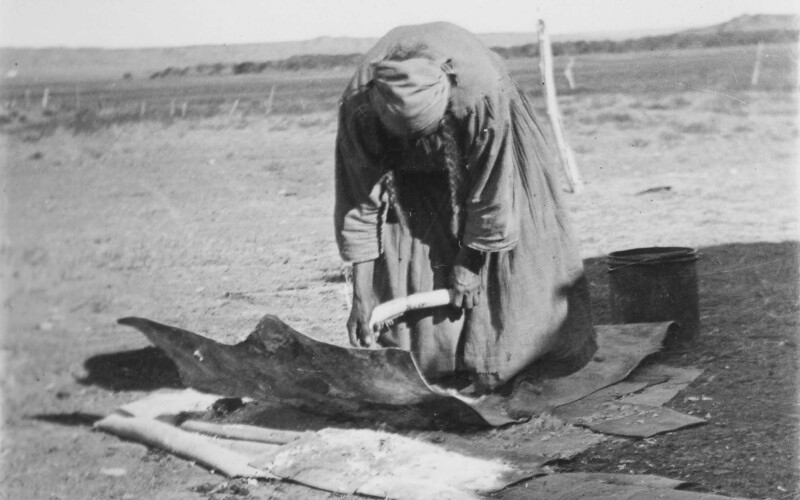
Someone Who Makes Leather
A tanner transformed animal skins into leather. The process involved many steps. Hides had to be washed and softened with water. Then the tanner would pound the hide to get rid of any remaining muscle or gristly bits. The hide would then be soaked in noxious substances, like lime, to loosen the hair. Sometimes this involved months of soaking and drying and soaking again in multiple substances. The hair would then be removed with a dull knife.
Once the hide was clean, a tannic acid would be applied. This is where tanners get their name from. Tannic acid is made with tree bark, and it's what colors the hide. This tanning process took another few months. Then the hide would be ready to be made into shoes, gloves, saddles, belts, and more.
3. Wharfinger
Someone Who Owns or Manages a Dock
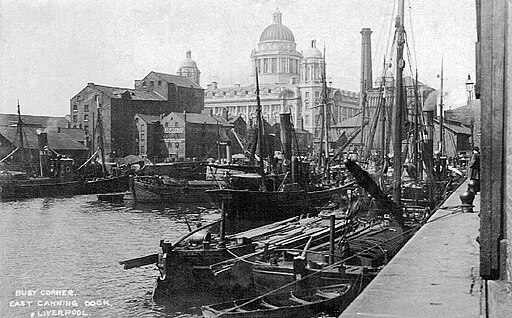
A wharfinger was someone who owned or managed a wharf (a dock). A San Francisco Newspaper from 1910 describes some of the responsibilities of wharfingers:
- Coordinate the employees of the wharf
- Analyze and improve operations
- Work with clients who wanted to dock their ships at the wharf
- Enforce safety regulations
- Manage all incoming and outgoing ships
- Keep tide tables updated
- Collect fees
4. Electrotyper
A Person Who Creates Letter Printing Molds
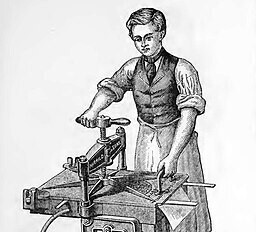
Electrotyping was a process invented in the 1840s that was used to make a metal replica of an object. A normal plaster or wax mold of the original object would be made. Running an electric current through a solution deposited metal into the mold. This produced incredibly detailed and precise replicas.
An electrotyper is the person who would perform this process. Check out this page from the Metropolitan Museum of Art to see a video of the process. You can also see examples of electrotyped objects in their collection!
5. Stevedore

Someone Who Loads and Unloads Ships When They Come into Port
A stevedore was a dockworker. Stevedores unloaded heavy cargo, so they needed to be really strong. In the 19th and 20th centuries, many of the stevedores in New York City were Irish immigrants.
Check out this newspaper article from 1882 about a dockworker who lived in Liverpool, England.
6. Ragpicker

Someone Who Collects and Sells Rags
The occupation of ragpicker has many other names: rag-and-bone man, junkman, grubber, bone grubber, junk dealer, rag gatherer, and more. A ragpicker was someone who rummaged through garbage to find rags and other items to sell for money. They might also go door to door, collecting unwanted household items.
Rags would be sold to make paper, and bones would be sold to make glue and fertilizer. Ragpickers were paid according to the weight and quality of the rags they scavenged. Rags were vital to the paper-making industry before people discovered how to make paper using wood chips.
7. Drayman

Someone Who Transports Goods on a Wooden Wagon
Draymen ferried freight between depots. They were called draymen because the type of wagons they drove were called "drays."
A dray could have 2 or 4 wheels. The wheels were smaller than normal wagon wheels so that the wagon would be lower to the ground. It had a flat, level floor and no sides. It was specifically designed for heavy loads.
8. Bootblack

Someone Who Polishes Shoes
In the 1800s, city streets were filthy. The streets were dirt, and people used horses for transportation. Transportation by horse means animal waste in the streets. There was sometimes sewage in the streets as well before cities started improving sewer systems. Walking in the streets resulted in dirty, filthy shoes.
Bootblacks, both adults and children, would clean shoes for a small fee. They would hang around train stations, barber shops, and other places to find customers. Some orphaned children living on the street took to bootblacking to earn money. Bootblacking was a profession of people living in extreme poverty.
Bootblacks are not as common in modern times, but you can still find bootblacking stations in places like airports and malls.
9. Drover
Someone Who Herds Livestock Long Distances

Drovers were in charge of transporting livestock long distances. Before trains were invented, animals like cattle and sheep had to be moved from their grazing places to the city, where they would be slaughtered for food. Drovers might also take animals to country fairs or markets to be sold. This could be hundreds of miles from where the animals came from, and it all had to be done on foot. Drovers accompanied these animals on their long journeys.
The occupation of drover largely ended with the railroad because it was faster, easier, and cheaper than going on foot.
10. Furrier
Someone who works with fur clothing
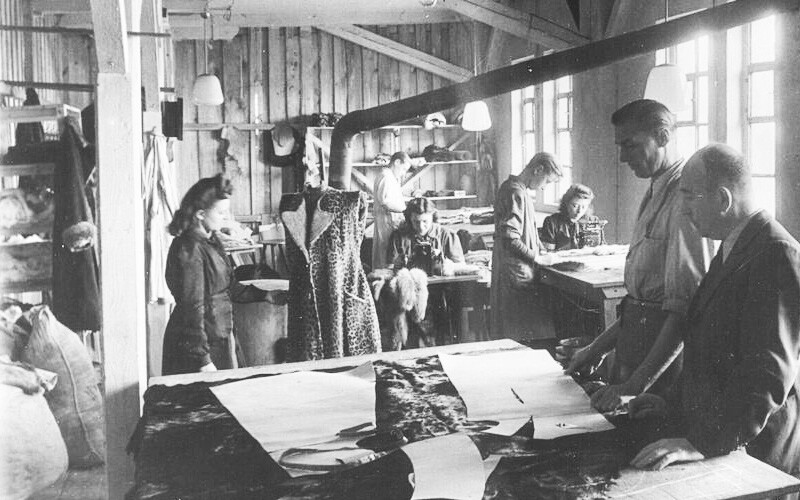
Furriers worked with furs to turn them into clothing. Hats, stoles, gloves, and coats made of real animal fur were very popular in the 18th and 19th centuries. Furriers would prepare the fur, sew the garments, and shape the animal heads for weasel or fox stoles.
Many of the furriers in the UK in the 1880s were Jewish immigrants.
From the 17th to 19th centuries, the fur trade between Europe and North America prospered. The indigenous peoples of North America trapped furs and then traded or sold them to European settlers. The furs would be transported to Europe to be turned into clothing and sold.
11. Diesinker
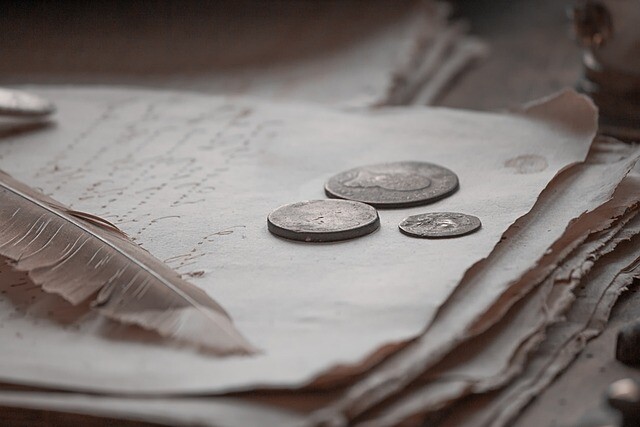
Someone Who Makes Dies for Stamping Coins
Engraved coins do not have their designs carved or etched into them. Instead, the design is pressed into the coin. This is done using 2 metal stamps called a hub and a die. The desired image would be etched onto the die in reverse (or in negative). The image for the other side of the coin would be etched onto the hub, and the blank metal coin pressed between them.
A diesinker is someone who makes the die. To see videos of the die-making process, check out this page from the US Mint.
12. Smelter
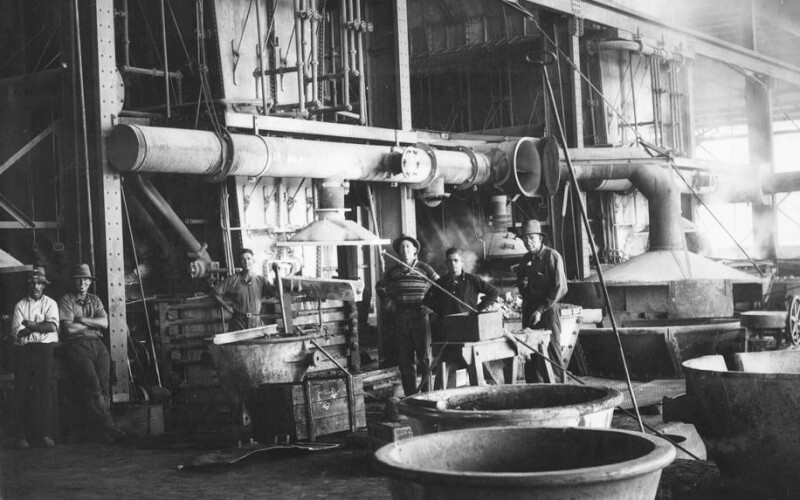
Someone Who Melts Metal from Ore
When metals are mined from the earth, they don't always separate easily. Sometimes the desired metal is encased in a chunk of other minerals. Smelters would use hot furnaces to melt the conglomeration of metals and separate out the desired ones. Smelters often worked at mines, separating out gold, silver, copper, and other precious metals.
Occupational Surnames
Some obsolete jobs still appear in people's surnames! Hundreds of years ago, many people were given a surname based on their profession. That surname (named after an occupation) carried down through the centuries. Last names like these are called occupational surnames.
Here are some examples:
- Smith (blacksmith, goldsmith)
- Cooper (someone who made barrels)
- Tanner (see answer key above)
- Fletcher (someone who made arrows)
- Wright (wainwright, boatwright, wheelwright)
Do you have an occupational surname? Try this surname search to see if your last name is derived from an occupation.
Find Your Ancestor's Occupation
Now that you know a bit more about some of the more obscure professions from your ancestors’ time period, see which of the obsolete jobs from this list you can find in your family tree! FamilySearch has many resources for discovering what jobs your ancestors had. Check out one of the articles below to start your search for your ancestor's occupations.








